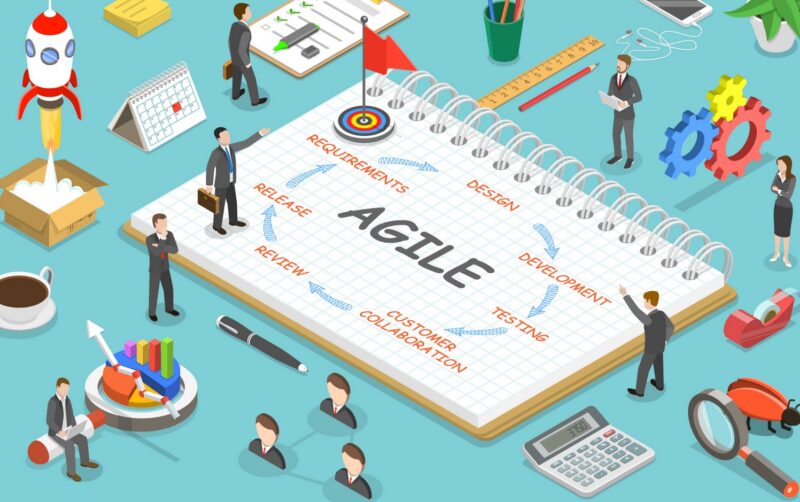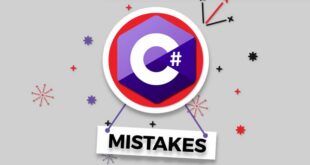The world pandemic has proved that the business environment is unpredictable, and is a subject to continuous transformation. Traditional methods of business adaptation do not work anymore. Organizations are seeking new techniques and methods of getting advantages on the market. Agile principles have become not a necessity but an indispensable advantage to remain among the leaders on the market and widely used by progressive software developers such as serokell.io.
Agile management was born in the IT industry to make different methods of software development more flexible. In February 2001 the initial group of IT developers issued an Agile Manifesto fixing basic principles of agile management.
Now, this methodology is successfully used in many software developing companies. But what does agile management means? What kind of agile models exists? And which one to choose for your software engineering? Let’s make it clear.

What is agile?
Today agile methods come to leading positions in software engineering. Agile philosophy is based on the following principles:
- Peoples’ experience and collaboration are at the center of agile methodology;
- Current user needs are more significant than the initial aim;
- It is vital to be agile to emerging changes rather than implementing a plan;
- Working software is more important than designing technical documentation;
- Permanent interactions with a customer have a priority over negotiating a contract.
According to agile methods, it is normal to make continuous changes during product development. Such a state of affairs is particularly advantageous for customers. They can give recommendations for software design and control every phase of product development and its progress in every instant of time. On the other hand, this methodology allows developers to split the mission into small tasks and provide valuable results within the estimated time.
There are several types of agile management, but the most common are Scrum and Kanban models. Let’s look through them.

Scrum software development
Scrum is the most popular software solution. At first glance, «Scrum» seems to be simple and easy to understand. Yes, it is a very flexible way to manage software development, but it is not easy to master it.
«Scrum» supposes an unsupervised team consisting of several members. There are two special positions in Scrum development – a product owner and a scrum master. A product owner works as a customer representative who can lead and supervise all the stages of product development. A scrum master does not give orders to other team members, but he or she coordinates team activity and leads the group.
«Scrum» is an iterative approach to software design. Everything begins with problem definition. Then the team breaks the project into small tasks and determines co-called sprints – an amount of estimated time to complete the task. After task completion, the scrum members present the results to stakeholders for giving feedback. The scrum team considers these recommendations, adds them to the task board, and starts to work on them. Thus, «Scrum» may be defined as an endless way of product development.

Kanban software development
Kanban software development is about balance. The main goal of the Kanban method is to allocate the workflow so that the team solves the task effectively, while every team member has something to do without excessive overwork. The Kanban team is tightly united. There are no special positions like scrum master or scrum owner.
Kanban workflows are more continuous than Scrum sprints. The Kanban teams place all the tasks on the Kanban To-do board. Then they divide them into categories: Planning, Developing, Testing, or Done.
Kanban software engineering has no strict schedule. The team members regulate their workflow by the Work-in-Progress principle, which means that the amount of tasks with different stages is limited. The key idea of this principle is to complete a particular task as soon as possible by involving task-free members in helping others.
An average time of task moving from stage Planning to Done indicates the effectiveness of software team workflow. If the team completes the task quickly, then the teamwork is fruitful and well-coordinated. If it takes a lot of time to complete a task, then the team tries to find the reasons for such delay and optimize the workflow.

Which agile model to choose?
Each listed-above agile model has advantages and disadvantages.
As for Scrum methodology, the strongest sides of it are the following:
- The fast product launch with minimal budget limits;
- Day-to-day performance control over product development;
- Permanent interaction and collaboration with a customer;
- Frequent product changes and demonstrations to a customer so that to avoid team fails and customer dissatisfaction in the future.
Nevertheless, there are also some Scrum disadvantages for software developers. And first of all, it is very hard to issue a contract legally as there are no fixed specifications of product development. Besides, the Scrum model demands IT engineers to be highly competent and qualified.
And there are some disadvantages for businesses as well. The project can be more expensive, as the development goes in some loops and the changes, which are implemented on the go, can be dismissed within the next iteration. One serious embarrassment by the principle of Scram is that the tasks, accepted for the sprint should not be taken aside, even if they are not actual anymore.
Speaking about Kanban, we have to mention the following advantages of this model:
- Flexible deadlines for task completion;
- A transparent team workflow because of using a visual «To-Do» board;
- Quick identification of weak points;
- The less cycle time of software development due to the cooperation of team members with the same skills.
Kanban is complicated to use for teams of more than five members and long-range project planning.
So, taking everything into account, the agile model is the best fit for the IT and software development field. Constant modifications and updates are inevitable in software engineering that is why Scrum and Kanban are so popular among IT developing teams.

Conclusion
As the development processes have become more complicated, the role of human being takes a back seat. The agile methodology represents a well-organized and simple process design with the central position of people. It is up to you which agile approach is the best for your software development strategy. If you want your software to succeed in the market, it will be better to master both methods.
Agile management is an already widespread practice in the IT industry. Many analysts believe that this practice will have a great impact not only in the software engineering field but also on web technologies, Big Data services, and other industries. And we have now agile marketing, agile business modeling, and trademarks of agile organization.
 Comeau Computing Tech Magazine 2024
Comeau Computing Tech Magazine 2024



